Housing development needs new level crossing to provide safe access
Residential property developer, Scotia Homes, had been granted planning permission to build a housing estate in Aviemore, Scotland. The permission included a condition that a level crossing on the access road to the site had to be upgraded, to safely accommodate increased traffic levels. Scotia Homes was not permitted to sell homes on the site until the upgraded level crossing was operational.
The existing Dalfaber Level Crossing was an Automatic Open Crossing, with no barriers to separate road traffic from trains and only flashing lights and bells to warn of an approaching train. There had been a number of near misses and collisions at the crossing over the years.
The track infrastructure at the crossing was owned by heritage operator, Strathspey Railway, while the level crossing itself and its ongoing maintenance were the responsibility of The Highland Council. Scotia Homes needed to deliver a safer level crossing for Strathspey Railway, while ensuring it was suitable for The Highland Council to operate and maintain over the long term.
With no in-house expertise in level crossing design and development, Scotia Homes appointed SYSTRA to consult with all stakeholders and deliver an appropriate solution.
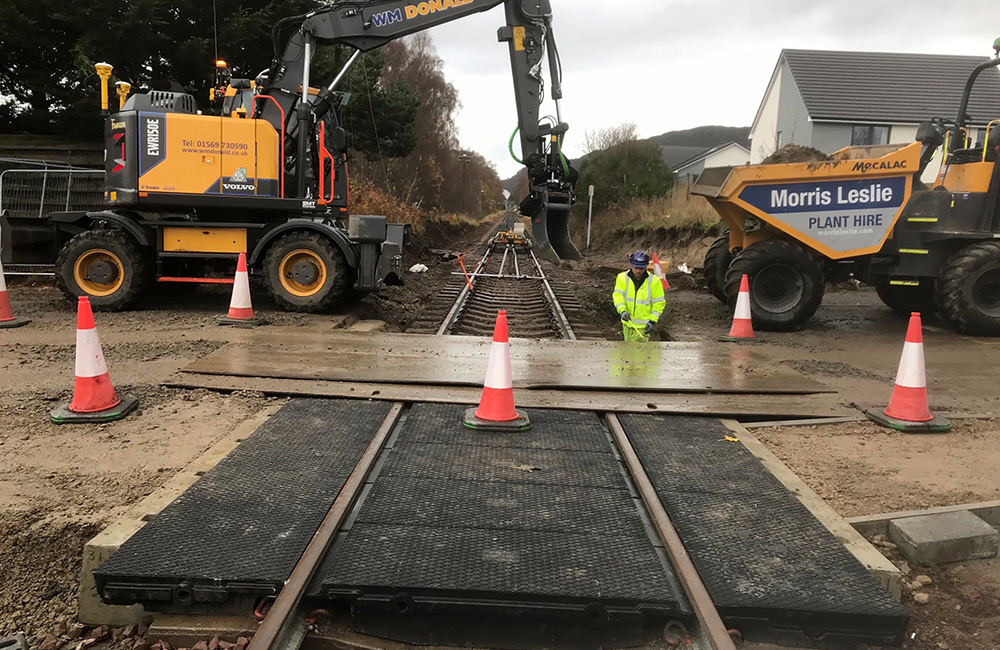
Optimum level crossing solution meets all stakeholder needs
To help Scotia Homes manage cashflow, SYSTRA provided a detailed cost schedule for the project. Costs were distributed throughout the programme, so that funds would be available at the right time to keep the project on schedule.
SYSTRA played a pivotal role in liaising with stakeholders Scotia Homes, Strathspey Railway, The Highland Council and – latterly – Principal Contractor WM Donald, as well as the Office of Rail and Road (ORR), which would ultimately sign off the new Level Crossing Order.
Based on the expected rail, road and pedestrian usage, the funding arrangements and the available maintenance skills, SYSTRA proposed an Automatic Barrier Crossing (Locally Monitored) as the optimum solution. This type of crossing features half barriers across the road, which lower automatically when a train approaches. Train drivers must ensure the barriers have operated correctly and the crossing is clear before proceeding.
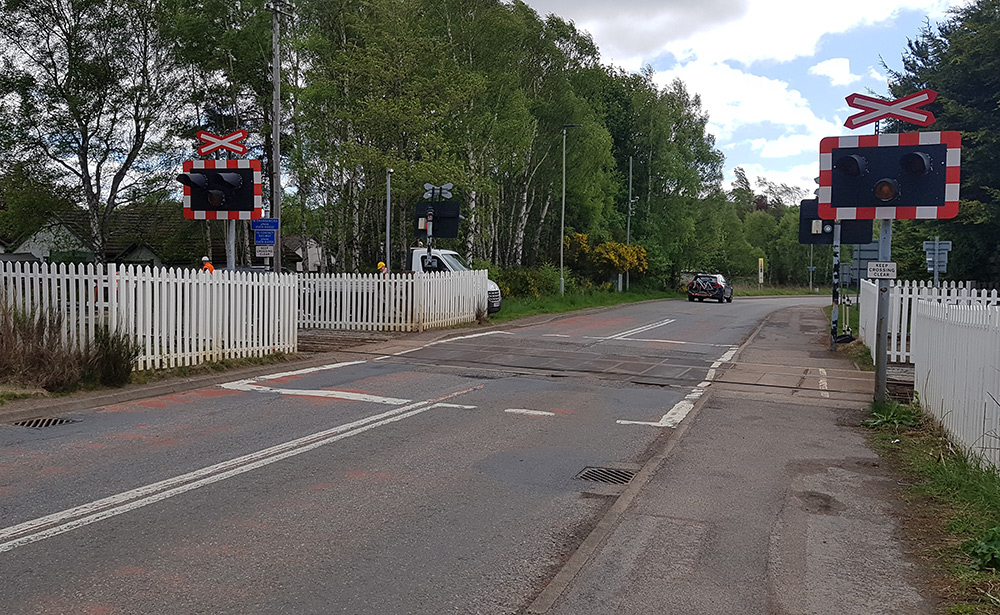
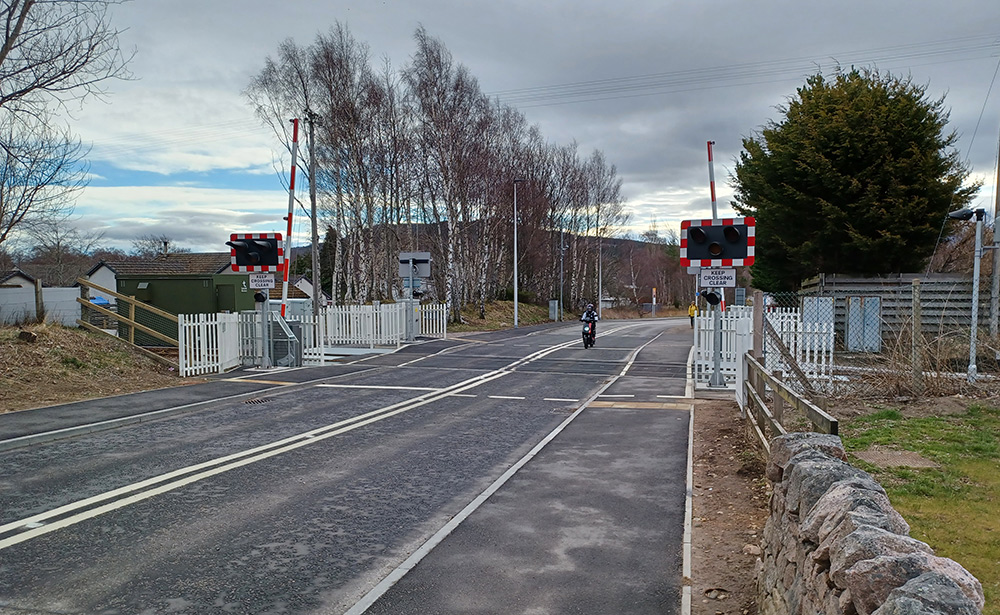
Crucially, this design addressed the needs of all stakeholders. As a heritage railway operator, Strathspey Railway lacked the resources or technical skills usually available on the main railway network, while the local council had no specialist in-house expertise in railway level crossing maintenance.
Multi-disciplinary project team keeps programme on track
The SYSTRA Level Crossings team implemented a three-stage strategy to minimise financial exposure for Scotia Homes while enabling the project to progress on schedule.
- Stage 1 – an initial Suitable and Sufficient Risk Assessment was produced to define the proposed level crossing type.
- Stage 2 – an Approval in Principle Level Crossing Ground Plan was produced, and used to begin formal consultation with the ORR and The Highland Council. This was developed through to an Approved for Construction Ground Plan.
- Stage 3 – Detailed Design was undertaken by all disciplines to make the upgraded level crossing a reality.
Supporting disciplines on the project were able to move straight to Detailed Design, once the level crossing type and layout had been agreed. This innovative approach helped to minimise cost, effort and time for the initial stages of the project, allowing the design team to focus immediately on the final proposals.
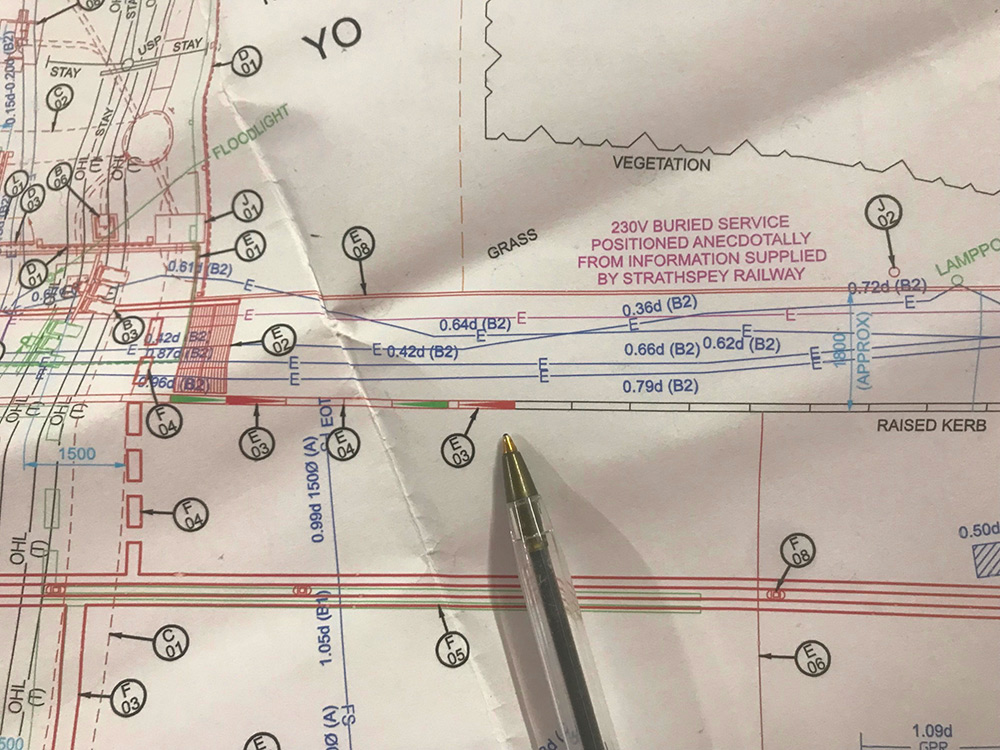
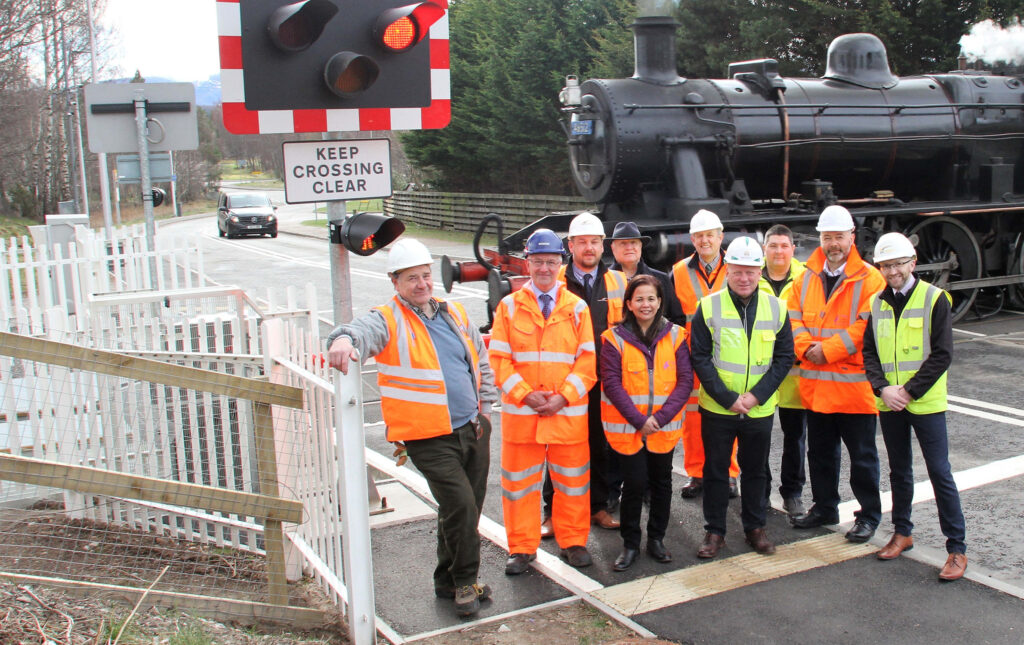
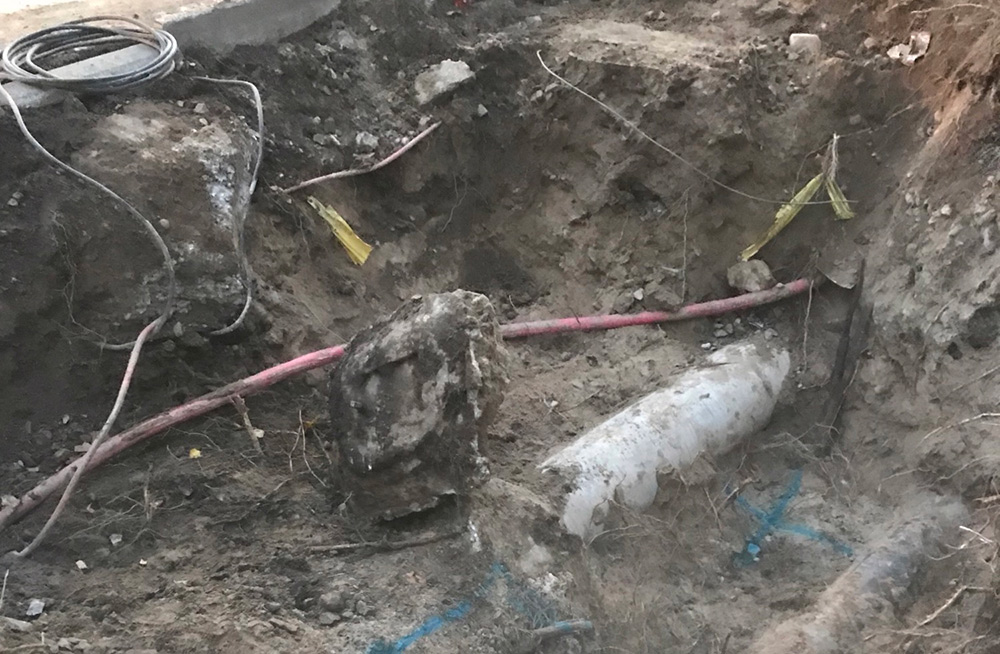
The signalling design was sub-contracted to Strathspey Railway, with SYSTRA providing the physical CAD drawings. SYSTRA also produced the Draft Level Crossing Order for the project.
SYSTRA civil engineers produced foundation designs for the crossing, while our E&P team delivered electrical designs to power the new crossing and the Relocatable Equipment Building (REB) for the signalling circuits. We also carried out a track condition survey and provided an appropriate track design and risk assessments for the level crossing proposals. Our highways specialists designed a road alignment to mitigate the risk of long, low vehicles grounding at the crossing.
A topographical survey of the existing level crossing was carried out by our Site Services team, and used by all disciplines on the project. The team also performed ground-penetrating RADAR scans of the area and dug observation pits to locate buried utilities. Despite this meticulous preparation, an undetected sewage pipe was found during excavations for the new road traffic lights. SYSTRA quickly stepped in to revise the foundation designs to accommodate the pipe, without altering the position of the traffic lights.
SYSTRA actively managed the entire design stage of the project and acted as Principal Designer, ensuring the client was aware of all its responsibilities under the CDM Regulations. This included supplying pre-construction information and collating the Health and Safety File after commissioning.
Safe, modern level crossing commissioned on schedule
On the agreed date, the SYSTRA-designed Dalfaber level crossing was successfully commissioned and signed into use on the public highway. This was the culmination of two and a half years of coordinated hard work and effort. The new crossing included LED road traffic lights and an improved footway and lighting for the public.
The successful project gave Scotia Homes the level crossing safety it needed to complete its new housing development. Strathspey Railway benefited from a safe, modern crossing, while the Highland Council gained a significantly improved asset that provided a far safer crossing for pedestrians and road users. Strathspey Railway reported that in the year after the new level crossing was introduced, there was not a single vehicle or pedestrian-related incident at the crossing.

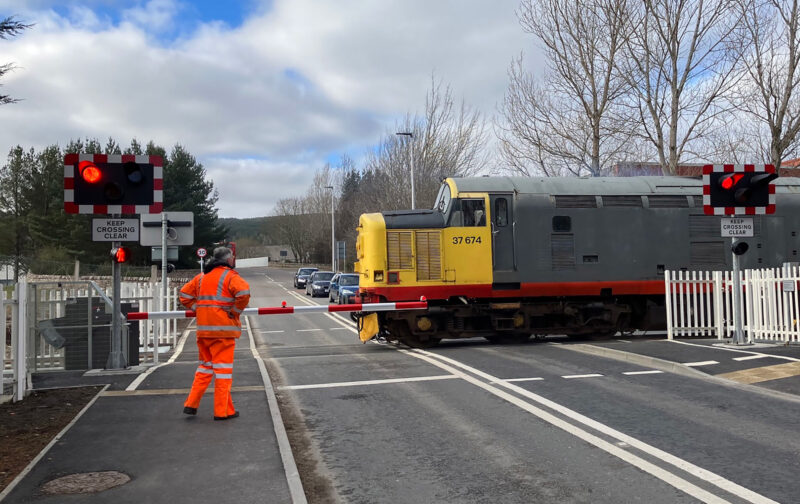
 Australia
Australia  Brazil
Brazil  Canada
Canada  Chile
Chile  China
China  Columbia
Columbia  Denmark
Denmark  Egypt
Egypt  France
France  India
India  Indonesia
Indonesia  Ireland
Ireland  Italy
Italy  Malaysia
Malaysia  New Zealand
New Zealand  Norway
Norway  Panama
Panama  Peru
Peru  Poland
Poland  Portugal
Portugal  Saudi Arabia
Saudi Arabia  Singapore
Singapore  South Korea
South Korea  Spain
Spain  Sweden
Sweden  Taiwan
Taiwan  Thailand
Thailand  Türkiye
Türkiye  United States
United States  Vietnam
Vietnam